As we slowly leave Chengdu city via the Third Ring Road, the beautiful greenery becomes more and more visible. After passing the toll plaza and leaving the urban area, the drive becomes more thrilling as the car speeds up, and we can see Bamboo-like groves on both sides of the road. These Bamboo groves, systematically planted, act as tall hedges. The rural setting isn’t much different from our own villages. Beautiful two-story houses, green fields, Bamboo forests, orange groves, and vegetable farms on terraced lands can be seen. It feels as though you are walking through a village in Nepal. After a one-and-a-half-hour journey covering 80 kilometres from Chengdu, we reach Meishan city. On passing this city and traveling another 30 kilometres, we see Bamboo forests everywhere—Bamboo dividers on the road, Bamboo decorations. The importance of Bamboo becomes clearer as you enter Qingshen County.
Qingshen in Sichuan province is a beautiful and rapidly developing city. As soon as we leave the city and enter the countryside, it feels like home, with everything but the language seeming not familiar. Everywhere we look, there’s Bamboo. Along riversides, around streams, there are Bamboo forests. In some places, the Bamboo has grown naturally, while in others, it has been systematically planted. It’s mid-August, the same season in Nepal when Bamboo shoots (tama) sprout. In every home and restaurant in Qingshen, dishes made from Bamboo shoots can be found.

A Miracle of Greenery
Sichuan province is famous for Bamboo, second only to another province in terms of Bamboo forest area in China. But today, our focus is on Qingshen County within Sichuan. From kitchens to bedrooms, offices to restaurants, from roadside dividers to decorations, Bamboo is everywhere. This unique feature has helped Qingshen transform the village narrative and embark on a long ‘green journey.’
Qingshen is famous for Bamboo production and industries based on Bamboo. The conservation and utilization of Bamboo have improved the standard of living for the county’s people. Bamboo has become an integral part of their lives. Women find employment in Bamboo-based industries, and the average person earns more than 5,000 yuan monthly, lifting the county far above the poverty line. For Qingshen, Bamboo is a crucial pillar of the ‘green economy.’
Advanced Bamboo Farming and Industry
Bamboo farming in Qingshen County is highly advanced and well-organized. Local farmers grow various species of Bamboo, producing high-quality Bamboo thanks to favourable climate, fertile soil, and local expertise. This green miracle has changed the village’s future.
Mr. Li Yinhai, chairman of Qingshen Zhuyiju Bamboo Wood Products Co. Ltd., purchases Bamboo from local farmers and manufactures various furniture and handicrafts in his factory. His products have reached every corner of China and are now being exported worldwide.
According to Mr. Li, the local government provides 200 yuan per year for three years to the community to plant advanced species of Bamboo. This means that within three years, the Bamboo matures and starts yielding. After maturity, the Bamboo is sent to factories within the county for processing.
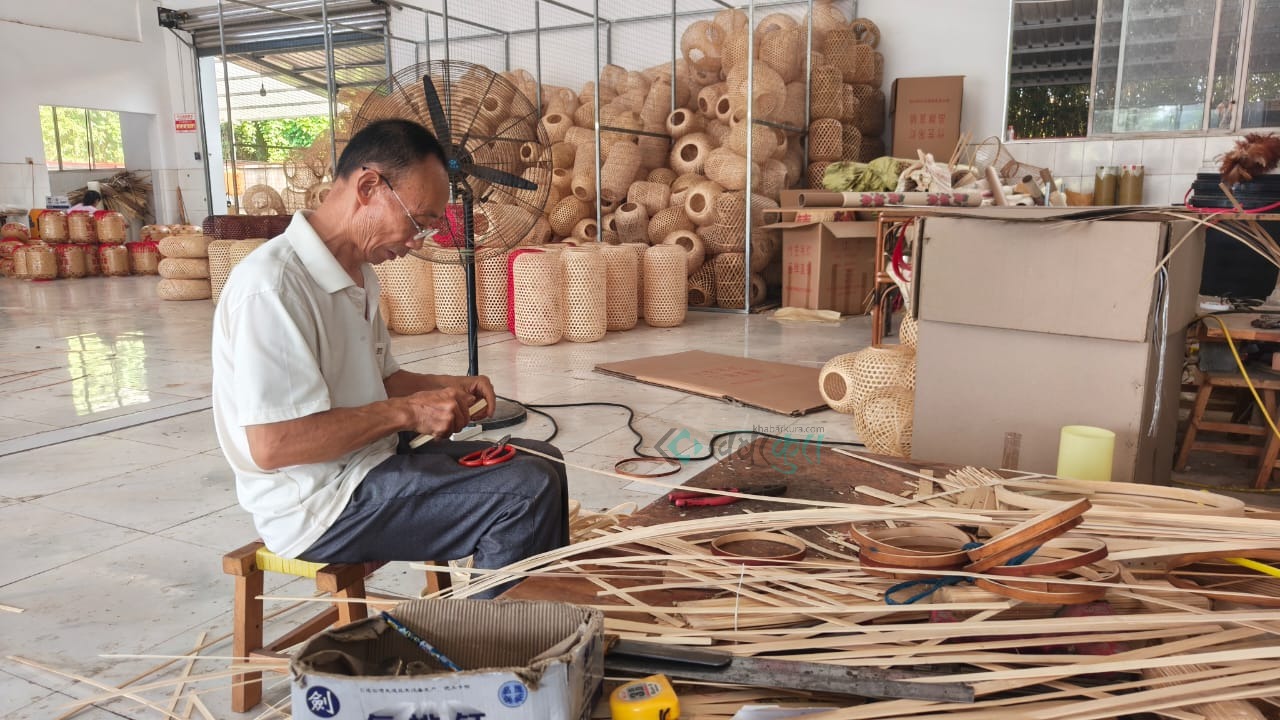
Bamboo Industry and Economic Development
Bamboo producer Li Kaiming from Tianchi village in Qingshen County said, “In 2023, I earned about 200,000 yuan (3.8 million Nepali rupees) just by selling Bamboo.”
Companies are particularly interested in purchasing high-grade Bamboo, with Bamboo No. 1 fetching the highest price because it’s used to make paper products such as tissue and napkin paper. This Bamboo is processed into pulp factories, and its products now account for 30% of the market share in natural-colour tissue paper in China.
As Bamboo gradually replaces plastic. The industrial park in Qingshen is working on establishing a new production line for mulch made from Bamboo fibers, tapping into market opportunities.
In November 2022, the Chinese government, in collaboration with the International Bamboo and Rattan Organization (INBAR), launched the “Bamboo as a Substitute for Plastic” campaign. In November 2023, the “Global Action Plan for Bamboo as a Substitute for Plastic” was jointly announced, giving new energy to the sustainable development of Bamboo and Rattan industries worldwide. The substitution of plastic with Bamboo can be seen everywhere in Qingshen County.
According to Mr. Li, Bamboo is used to make various products, including furniture, lanterns, decorations, and handicrafts. Bamboo is also used for flooring, windows, and hundreds of other products. The people of Qingshen not only benefit from Bamboo farming but also earn from Bamboo-based industries, which include:
- Bamboo Handicrafts: Small industries produce Bamboo bowls, baskets, furniture, and decorative items. These handicrafts are in demand internationally, providing locals with a good income.
- Bamboo Paper Industries: There are also industries in Qingshen that produce paper from Bamboo. Bamboo paper is eco-friendly and durable, and its demand in the global market is increasing.
- Eco-friendly Bamboo Products: Bamboo is used to make clothing, utensils, and other daily-use items. Although these products are slightly expensive, they are favoured by environmentally-conscious consumers.

Government Support and Promotion Programs
Recently, a month-long training on Bamboo as a substitute for plastic was organized in Beijing, starting on August 29 and running throughout September. Trainees from countries along the Belt and Road Initiative, including Nepal, are participating.
INBAR co-chair Jiang Zhehui said, “Bamboo and Rattan are important renewable resources widely found in developing countries in Asia, Africa, and Latin America. Sustainable development and utilization of Bamboo and Rattan resources can play a significant role in improving living standards, reducing poverty, and promoting economic development and environmental conservation in developing countries.”
The National Development and Reform Commission of China and other departments have issued a three-year action plan to promote Bamboo, providing new opportunities for strengthening and expanding the Bamboo industry. Qingshen County has benefited from this plan.
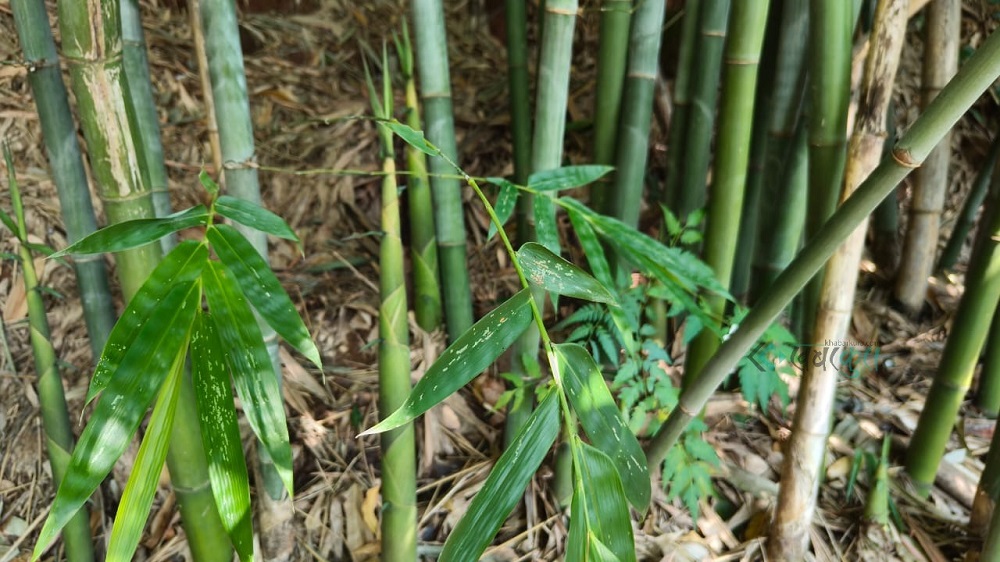
Bamboo Parks and Tourism
Bamboo parks and tourist areas have been developed in Qingshen. In one corner of the market, there is a Bamboo museum. This museum provides information on how China has worked with Bamboo for the past 2,000 years. The museum also showcases Bamboo products collected from other countries around the world. A ‘basket’ sent by Nepal is displayed in this museum.
Furthermore, there is a preserved Bamboo-based village in Qingshen. Near this village, live Bamboo plants collected from various countries have been planted. Clear information about the species of Bamboo is provided in both Chinese and English. Any visitor who comes here can learn about and experience Bamboo. For those wanting to study Bamboo, Qingshen is like a ‘live library.’ The tourism promotion here is exceptional due to the millions of tourists attracted by Bamboo. The local community has found opportunities to earn additional income by working as tourist guides, running hotels, restaurants, and craft shops.
In addition to Bamboo cultivation and processing, there are poultry farms in the Bamboo forests. Bamboo mushrooms, black mushrooms, medicinal herbs, and poultry are raised in the Bamboo forest. There is no land left idle. Land that doesn’t have Bamboo (whether it be hills or valleys) is planted with oranges and other vegetables, which helps farmers earn extra income.
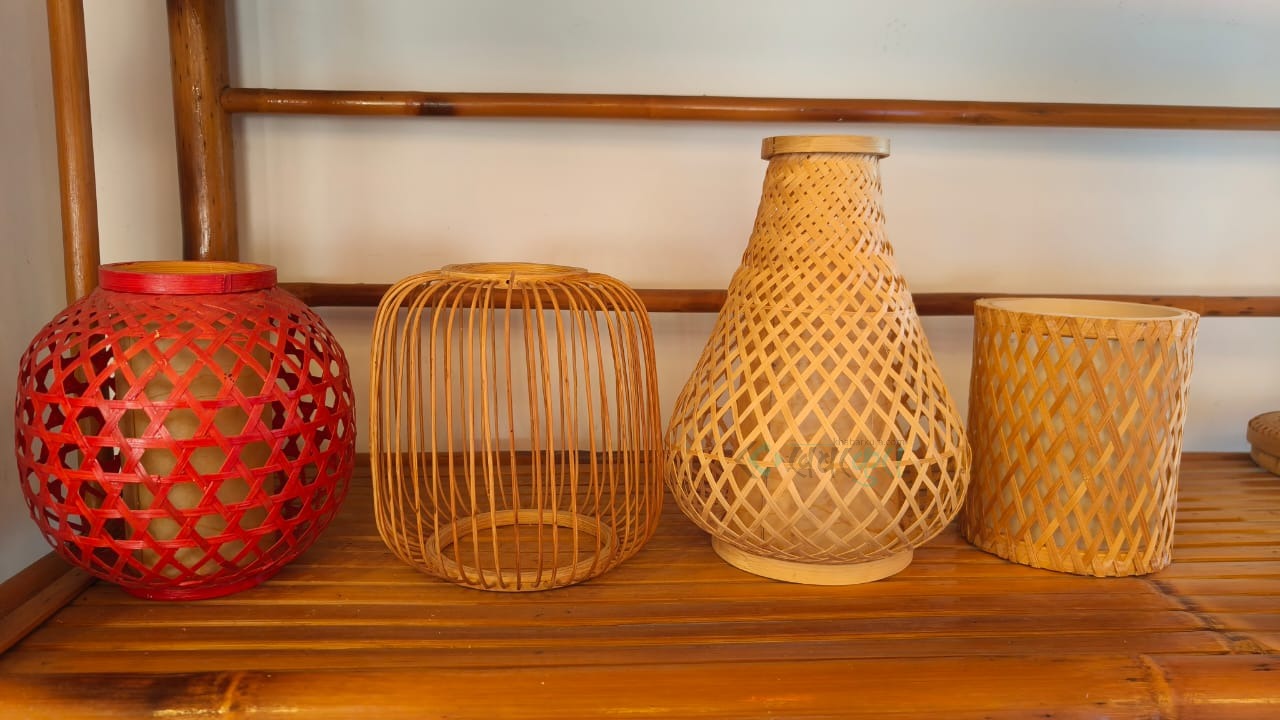
Livelihood for the People
Bamboo products from Qingshen County, especially handicrafts and furniture, are also exported to international markets. This has helped locals earn over 5,000 yuan per month. Due to this, the people of Qingshen County have been able to generate good income from various sources related to the Bamboo industry. They can work from home or be employed as workers in factories. Regardless of how they work, they receive a handsome salary every month.
Bamboo weaving is a traditional art and a key cultural heritage of the area. Women and the elderly in the local community have adopted this skill as a means of livelihood. The use of modern technology has improved both the quality and quantity of production.
Madam Zhou has been working at Mr. Li’s factory for the past 10 years. She teaches other women how to make lanterns. According to Madam Zhou, she earns between 5,000 and 6,000 yuan per month. She says that a group of four to five women can make about 300 small lanterns in a day. Mr. Li, the factory owner, mentions that these lanterns are sold in the market for 70 yuan each.
Along with the development of the Bamboo industry, the standard of living for the local people has improved. Employment in Bamboo cultivation and processing has helped reduce poverty and increase income levels. Exporting Bamboo products has also made a significant contribution to local economic development.
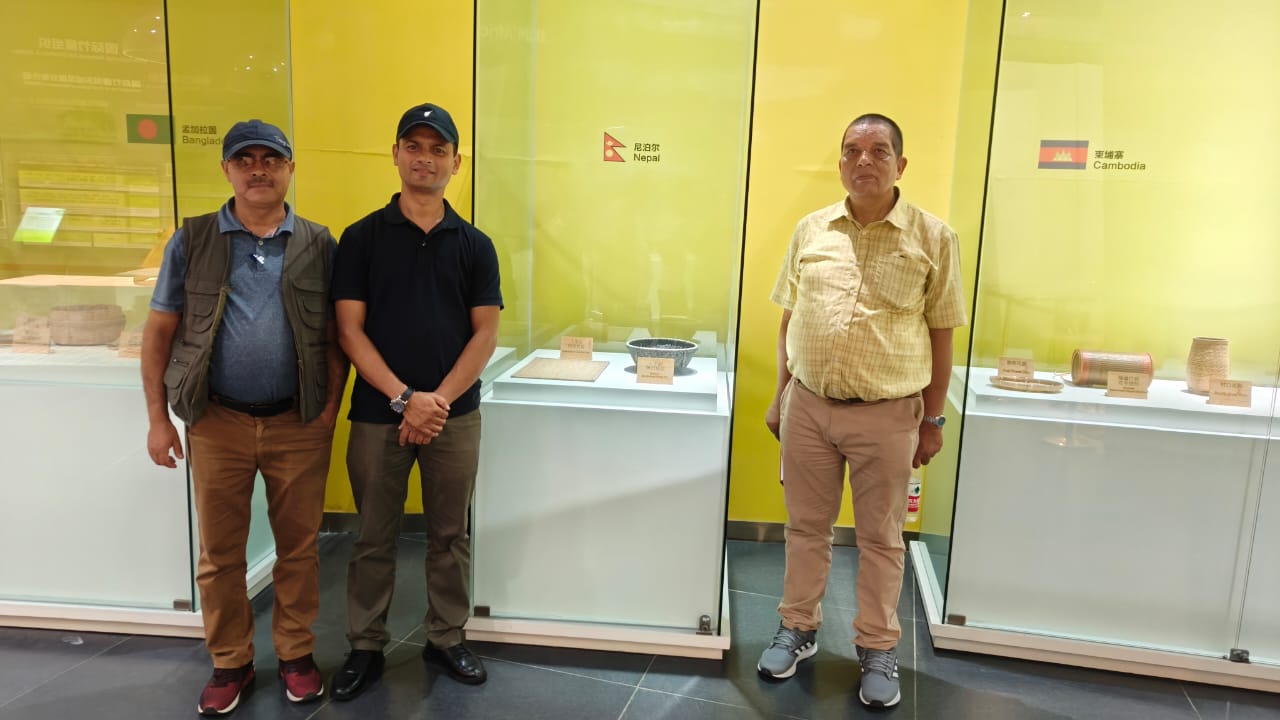
Nepal Found in Qingshen
Outside the International Bamboo Museum in Qingshen, the flag of Nepal, a member nation of INBAR (International Network for Bamboo and Rattan), is hoisted proudly. Inside the museum, showing a photo of former Nepali Prime Minister Jhala Nath Khanal, Mr. Li says, “Nepal can also make a variety of products from Bamboo, just like we do here. If there is a request, we are ready to train people in Nepal to work with Bamboo.” In fact, Nepal is a home of hundreds of species of Bamboo.
Moreover, Nepal was selected as the chair nation for the 13th Council Session of INBAR for the period 2023-2025. Therefore, Nepal can learn a lot from Qingshen and further develop its Bamboo industry.

Conclusion
The Sichuan province has issued policies to promote the development of the Bamboo industry, emphasizing the need for more research to replace plastic with Bamboo products. Qingshen County is committed to implementing these policies and has prioritized Bamboo conservation. Through these efforts, Qingshen’s “green journey” has not only transformed its economy but has also contributed to environmental and cultural preservation.





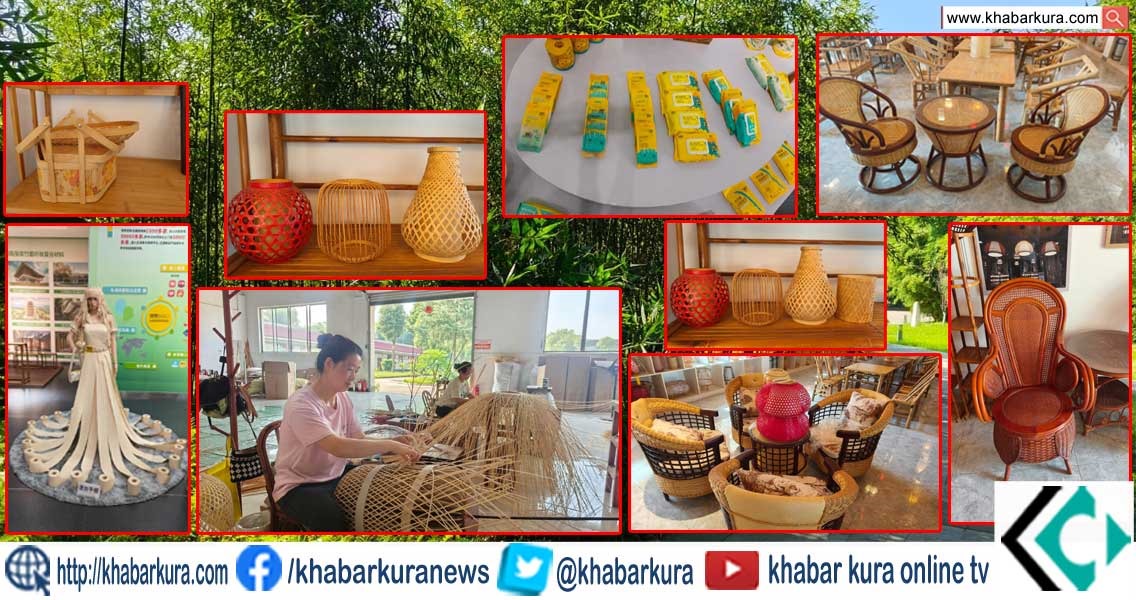














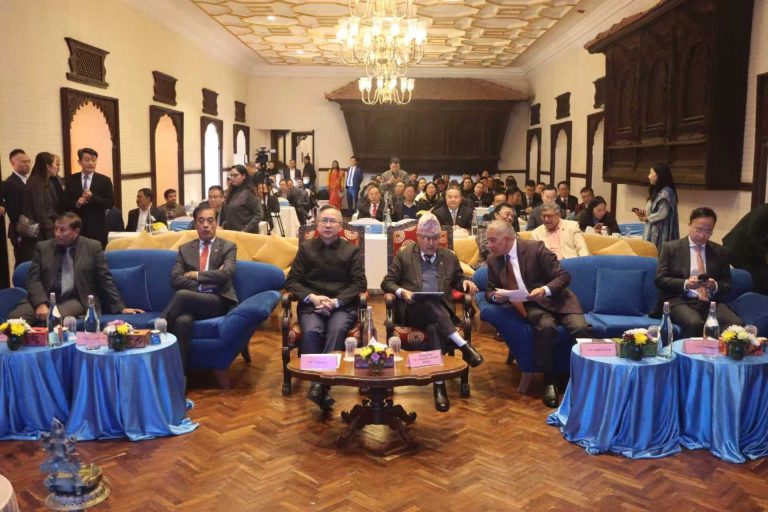
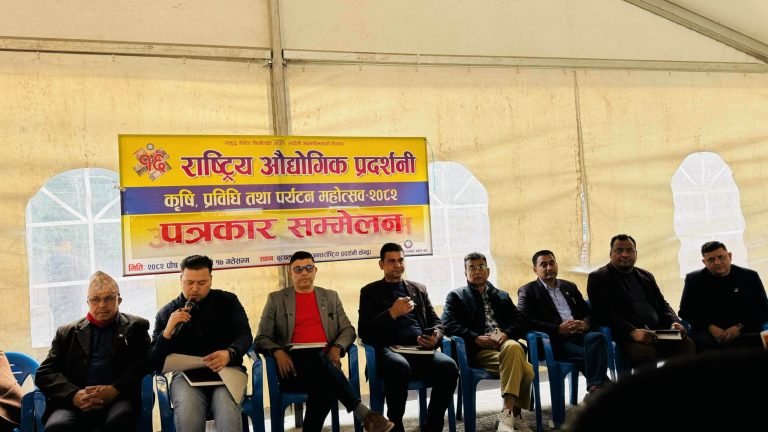


प्रतिक्रिया